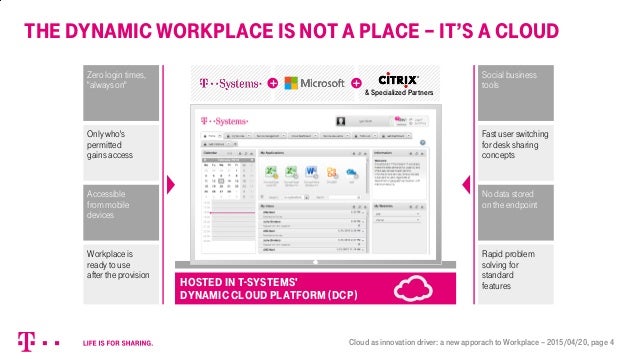T-systems Driver
T-Systems, a wholly owned subsidiary of Deutsche Telekom, provides airport operation system for Beijing Daxing International Airport. The digital service provider T-Systems has tailored its self-developed Smart Airport Software for digital airport management to the needs of the new Beijing airport. When fully implemented, the systems developed by the Deutsche Telekom subsidiary will form the basis for bringing up to 100 million passengers a year to their destination quickly and efficiently.
- Download 1-Wire/iButton Drivers for Windows Choose Operating System: -Not Selected- Windows® 10 Windows® 8 and Windows® 7 Windows Vista® Windows® XP SP2 or higher Windows® 2008 Server Earlier 32-bit Microsoft® OS.
- About T-Systems Data Centers With the opening of Germany's largest, state-of-the art twin-core data center in Biere/Magdeburg, T-Systems proved itself to be a driver of digitization back in 2014.
RT Systems Cable Driver. TH-D74 Driver Help. Yaesu Prolific Driver.
T-Systems’ Smart Airport Software is already in use at more than 40 airports worldwide. It analyzes, processes and visualizes the entire flight-related data of airports in real time, from air traffic control and airlines to ground services and other service providers. Through the digital networking of all personnel involved in flight operations, the control system ensures the smooth coordination of flight movements and ground processing processes, and makes an important contribution to optimizing flight punctuality.
Beijing Daxing International Airport uses T-Systems solutions to digitize all airport processes in a highly secure local server environment. The collaboration platform ensures the flexible and simple integration of 70 partner systems that are used in all areas of airport operations. Beijing Daxing Airport has become one of the most digital airports in the world.
Market trends and legal developments in healthcare digital transformation
While the COVID-19 pandemic has changed every aspect of our lives, digital transformation in healthcare has accelerated above others. The pandemic has changed the healthcare delivery paradigm from human to digital platforms faster than Klaus Schwab could have imagined. In 2016, the World Economic Forum chairman coined the phrase 'Fourth Industrial Revolution,' envisioning the combination of fourth industrial-era technologies in hardware, software, and biology, or cyber-physical systems.
These new technologies, leveraging advances in communication, connectivity, and computing power, would usher in a more efficient way to live, work, and socialize. Who knew how the horrific circumstances triggered by a global pandemic could accelerate an evolution that might have taken 20 years and condensed into a single year? Healthcare has gone digital, and there is no going back now.
T-systems Drivers
In 2020, virtual visits, remote monitoring, and patient-engagement tools drastically reduced the number of people at doctors' offices and clinics. According to Frost & Sullivan, about 35 percent of patient interactions will be digital this year, compared to 20 percent in 2020, with an expected 20–25 percent growth in patient engagement management solutions this year. A survey of leading healthcare CIOs at the Scottsdale Institute revealed a telehealth visit volume increase seen by physicians by a factor of 50 times on the low end and 175 times on the high end.

The current global healthcare crisis is highlighting the need for technology to provide solutions. Digital health technologies can make it much more convenient for a patient to make an appointment, more manageable for doctors to access the right information at the right time, and more efficient for a health system to deliver high-quality care at an affordable cost. The shift to the digital patient experience provided access to care and introduced people to a much higher convenience level. And for many, there will be no going back now. The healthcare industry must provide robust and seamless digital experiences for patients of all ages or lose patients to companies that offer better digital services. Third-party payers will also have to meet the challenge of processing claims, updating patients and providers on the status of payments, coverage, and benefits in real-time. The patient engagement space will experience a significant uptick in M&A activity with the companies providing the best digital solutions to patients.
New year, new healthcare solutions
Consumers Are in Control. Technology will improve the healthcare provider's levels of 'digital' in their healthcare offerings. Consumers will continue to take the driver's seat in their healthcare journeys. The opportunity to leverage smart devices, machine learning, and omnichannel communication tools allows the deliverables for a reasonable cost.
Virtual Care Will Grow. Reimbursements for telemedicine will expand in this new year through a hybrid model combining telehealth, and in-person check-ins become common. This year, there will be a continued rise in the use of virtual care services for maternity, postpartum, pediatric, and more. 32 percent indicate that expanded virtual health services are a top priority, and this number will rise.

Hospitals Get 'Smarter.' In 2021, healthcare will see the benefits of A.I. and machine learning in scalable solutions. Providers are starting to accept A.I.'s role and the ability to identify sequences and trends in data that humans cannot. Smart speakers and smart cameras can help automate activities as the technology used in hospitals will help scale nurses' work, increase operational efficiency, and provide virtual patient monitoring.
Walmart & Amazon Redesign Healthcare. With a high percentage of Americans living near a Walmart—it's one of the most accessible resources for rural populations or Medicaid recipients. By establishing facilities within a low-cost environment that is functional and clean, Walmart can introduce predictability, innovation, and standardization. Walmart can become both a health plan and the provider and eventually lead to its own insurance distribution.

Why it matters to your business
While excitement and investment in these technologies are rapidly increasing, the adoption and value proposition of technology for health care remains complex. Which innovations will provide more cost-effective, patient-centered care? How do you differentiate valuable technologies from hype? How do you leverage digital strategies to benefit all aspects of healthcare? Answers to these questions are essential for both health systems as well as business leaders developing related solutions.
Digitization of the patient experience is likely to be on-demand, higher quality, priced competitively, and the user experience will be watched mostly by Gen Z and millennial patients. It is expected to open up different predictive analyses to be used to personalize care. Data collected everywhere, from apps to electronic medical records to wearable technology, will enable more comprehensive, digital approaches to healthcare problems.
This year, healthcare data infrastructure alone is expected to be the backbone of the healthcare system. The U.S. healthcare system produces one zettabyte of data every year, which is predicted to double every single year moving forward. This data is being shifted in different directions, and many patients are suffering because they cannot gain access quickly. Therefore, a company that can solve this problem by making data collection and analysis more seamless will be critical. Enhancing patient care is a primary driver of data interoperability, which is, in fact, a market in healthcare poised to reach $5.3 billion by 2027, according to Emergen Research.
Why are VCs and corporates investing?
As we move further in the new year and rethink how healthcare should be delivered, digital health startups will likely see a continued opportunity, investment, and initial public offerings. In fact, investors in the space spent record investment dollars on digital health startups last year: $14.2 billion globally and domestically $9.2 billion, according to Crunchbase. Investments in 2021 could even rival 2020 as investors expect innovation to come from areas like data interoperability, mental health, and personalized care.
The COVID-19 pandemic increased the public's awareness and understanding of how interconnected the world is, a view that will only grow and expand in 2021. Due to this regained interest in community health and an appreciation for vaccines as of late, there will be innovation combining technology with A.I. to address the next pandemic, produce out-of-the-gate vaccines, and collaborate with other companies, even the government.
T-systems Driver Job
During the current COVID-19 pandemic, the industry garnered an influx of investment at a level the industry hasn't seen before. The pandemic forced non-digitally native companies to develop the ability to care for patients digitally quickly, and this drove up the value of companies providing these services. There will be an acceleration of the 2020 trends in deal flow, such as M&A and IPOs for quality assets that are rare and competitive, driving up valuation. At the same time, digital health companies are becoming more comprehensive rather than focusing on one area.
Legal issues to consider
Cybersecurity. Unfortunately, healthcare has always been a target for cybercriminals since the data is so valuable. These days, healthcare providers face strict penalties for data breaches and cannot afford to compromise their operations' safety. Additionally, patients need confidence that their privacy and confidentiality are fully secure. But, the past year's rush to virtual environments across healthcare in the pandemic created new vulnerabilities. For instance, staff used personal devices and networks, postponed training, and I.T. staff was diverted to deploying telehealth, remote monitoring, and remote work solutions.
Also, healthcare saw a big surge of high-profile ransomware attacks. So, 2021 will be a year of security streamlining as organizations retrain and identify newly created risks by their transformed operating environments. Moving forward, the industry will have to address the challenges that arise. Organizations may dramatically increase countermeasures to protect I.T. systems, and if they don't, the reality is that cyberattacks and data breaches will only worsen.
Data privacy. New legislation in California will require entities to provide consumers with the right to opt-out of sharing their data with third parties. Businesses are obligated to inform consumers if they have been 'profiling' them using automated processes. A new government agency in California will be in charge of rulemaking and enforcing the law. As we struggle to treat patients infected with the COVID-19 virus and its after-effects and keep the workplace and society safe from infection, the personal right to privacy will be at loggerheads with improving healthcare in the community.


Registration requirements. As healthcare is delivered remotely and across state and national borders, registration of healthcare providers, third party payment, and reimbursement will be challenged as never before.
Liability. Digital health providers will seek to limit liability claims for medical negligence claims, contractual liability, and exposure.
T-systems Driver Salary
Market access. There is a greater demand for healthcare services. While national healthcare systems in the U.K. and Canada are better suited to pursuing the national interest, individual American states have byzantine, decentralized, and complex systems that do not lend themselves to central direction, policy, or policy choices.
T-systems Driver Jobs
Louis Lehotis the founder of L2 Counsel. Louis is a corporate, securities and M & A lawyer, and he helps his clients, whether they be public or private companies, financial sponsors, venture capitalists, investors or investment banks, in forming, financing, governing, buying and selling companies. He is formerly the co-managing partner of DLA Piper’s Silicon Valley office and co-chair of its leading venture capital and emerging growth company team.
